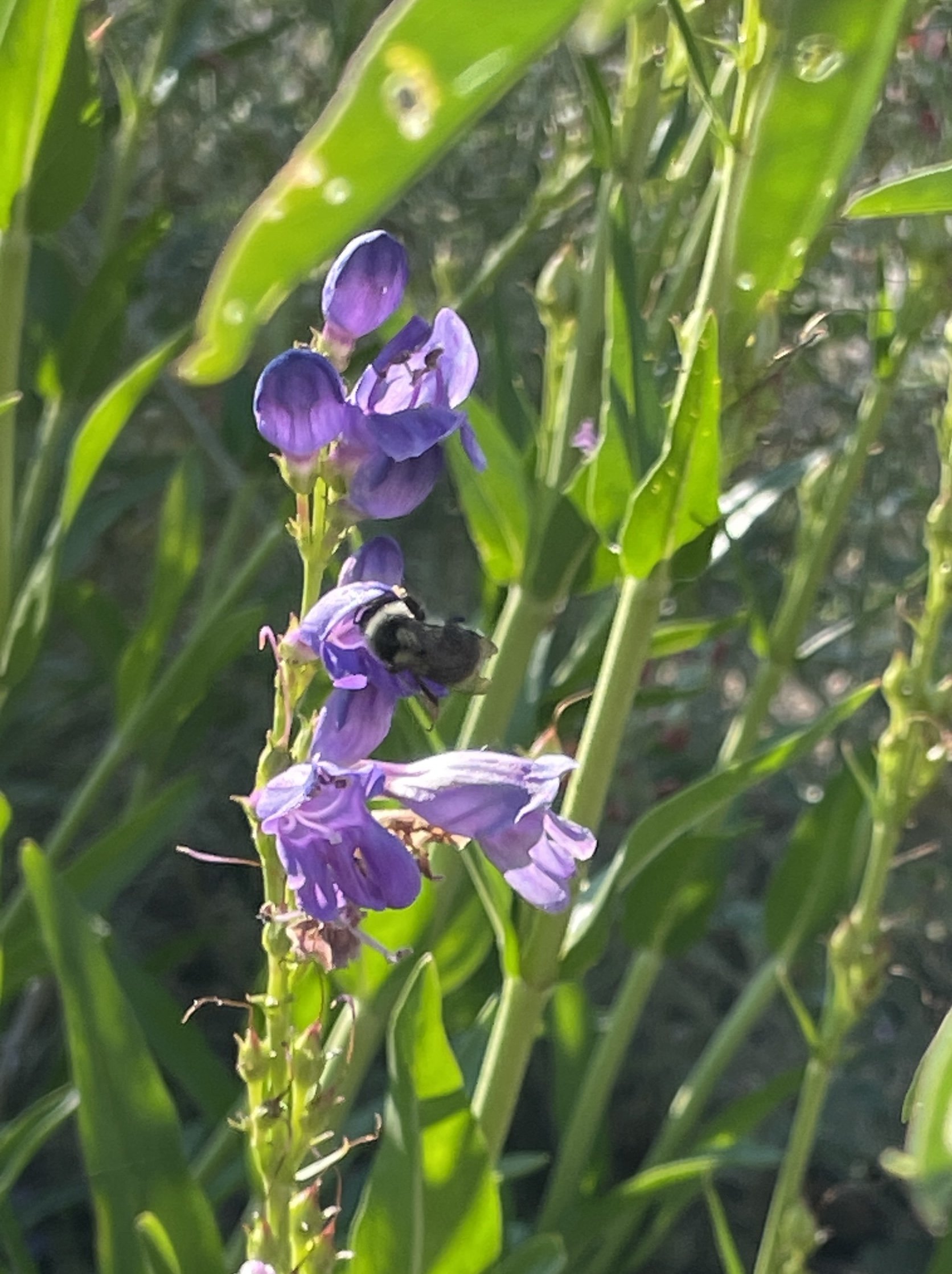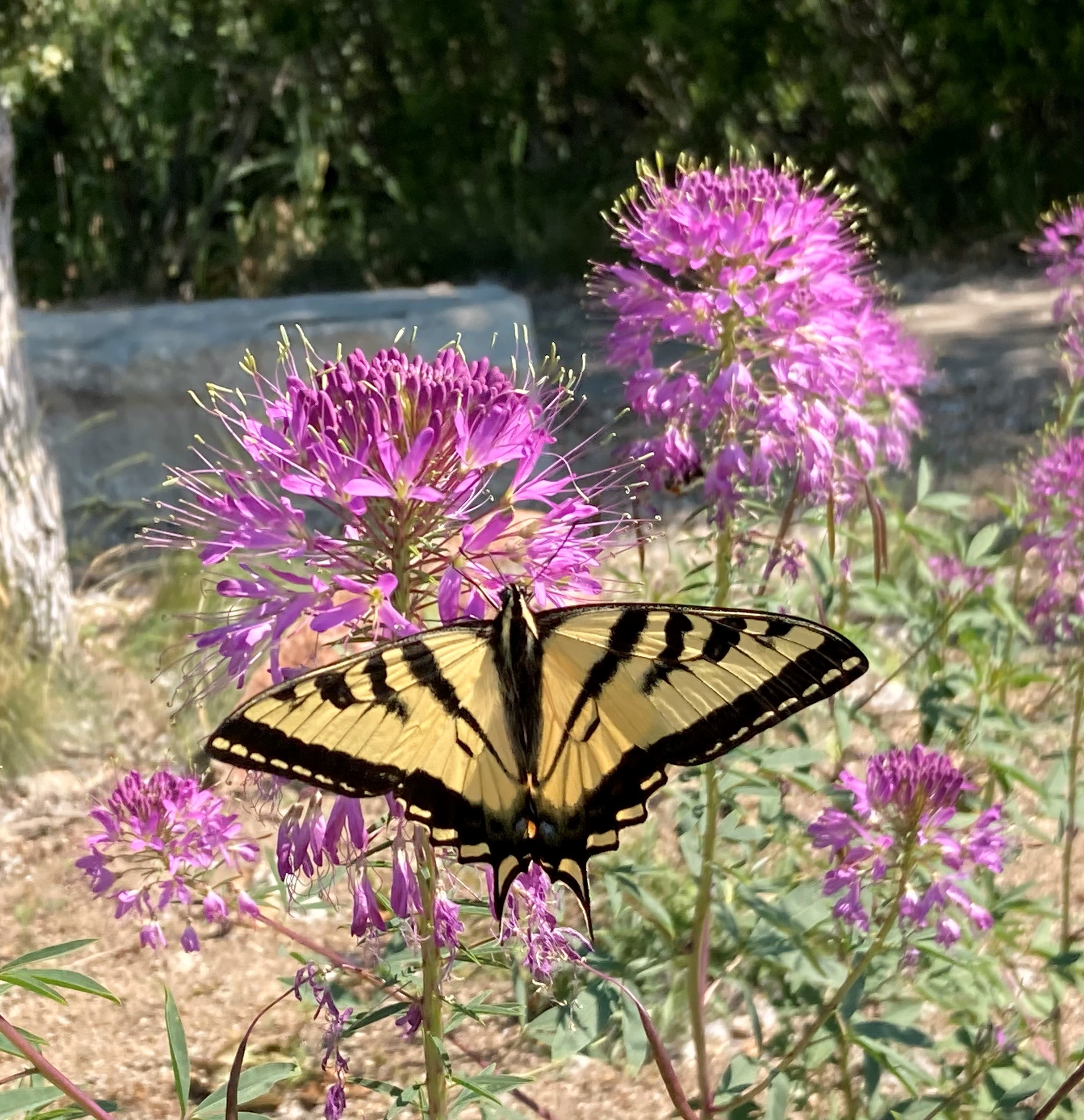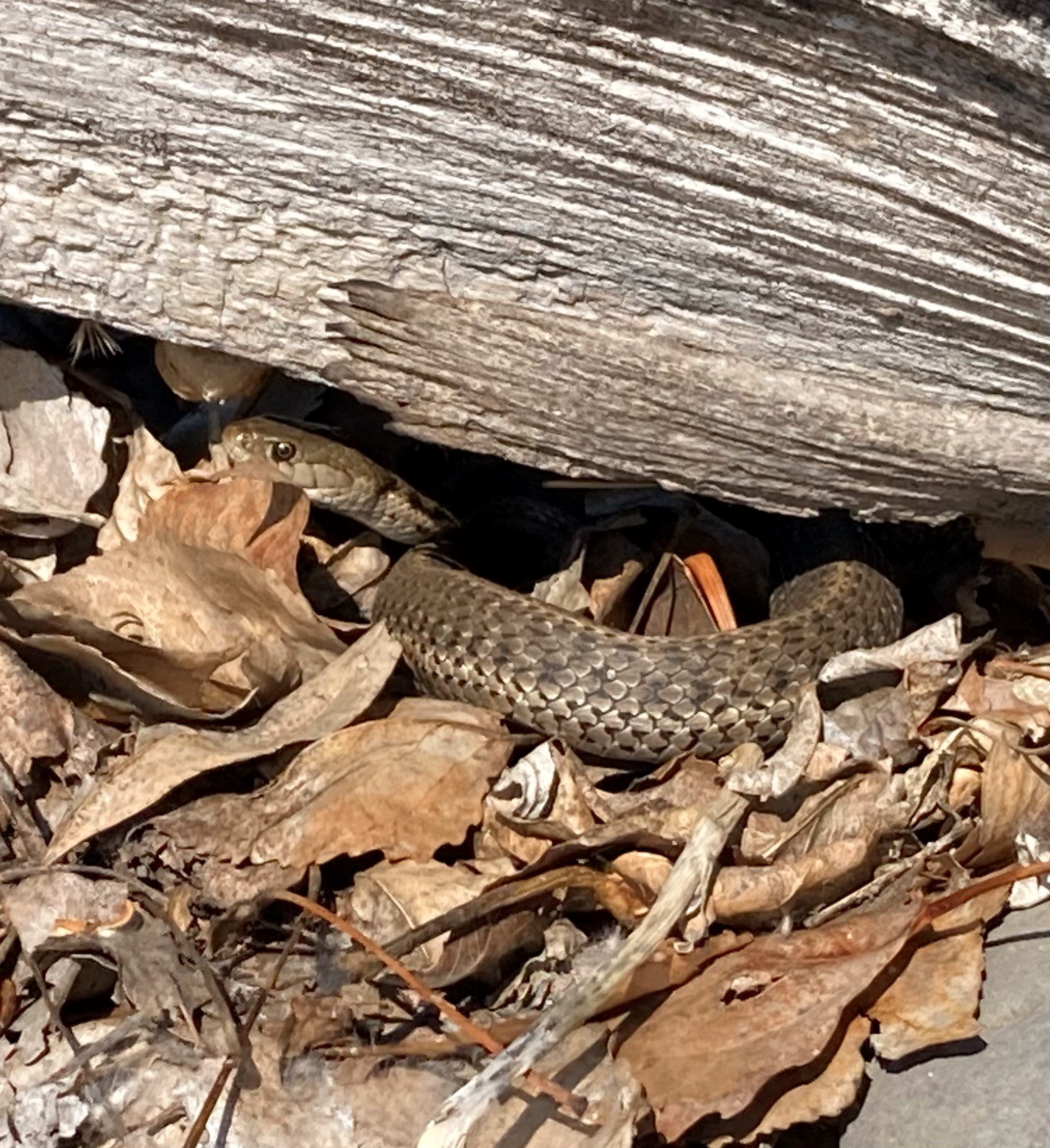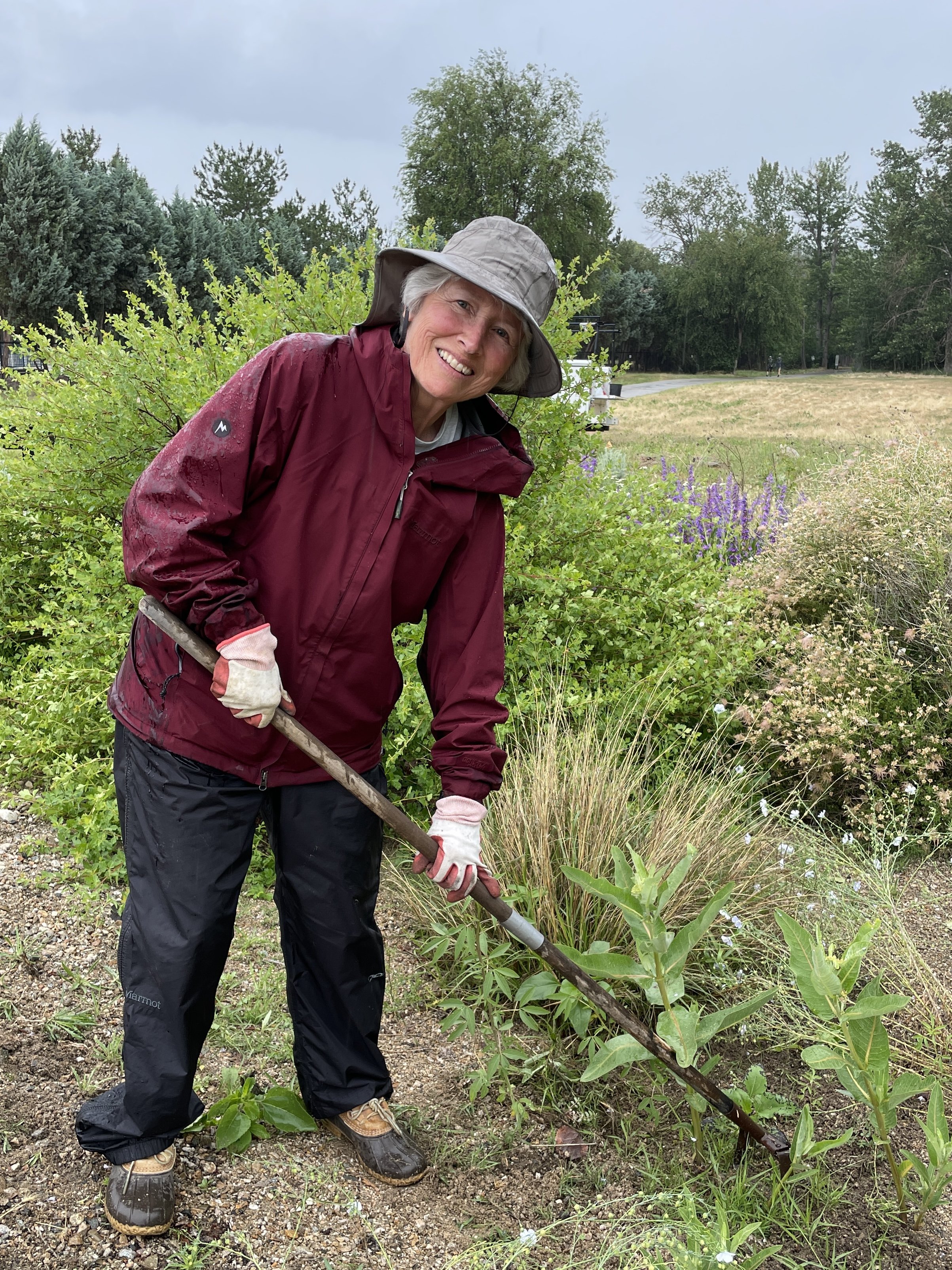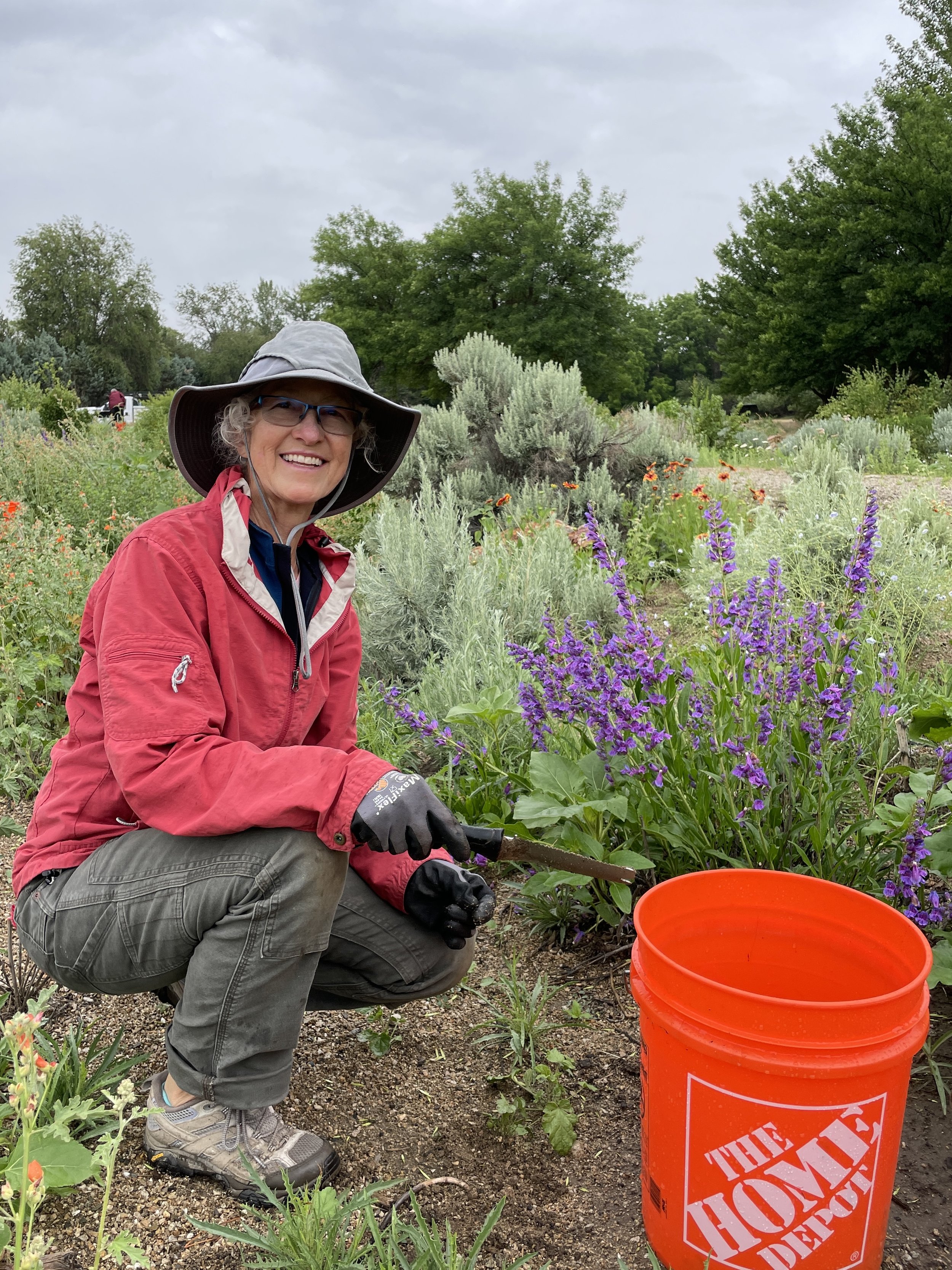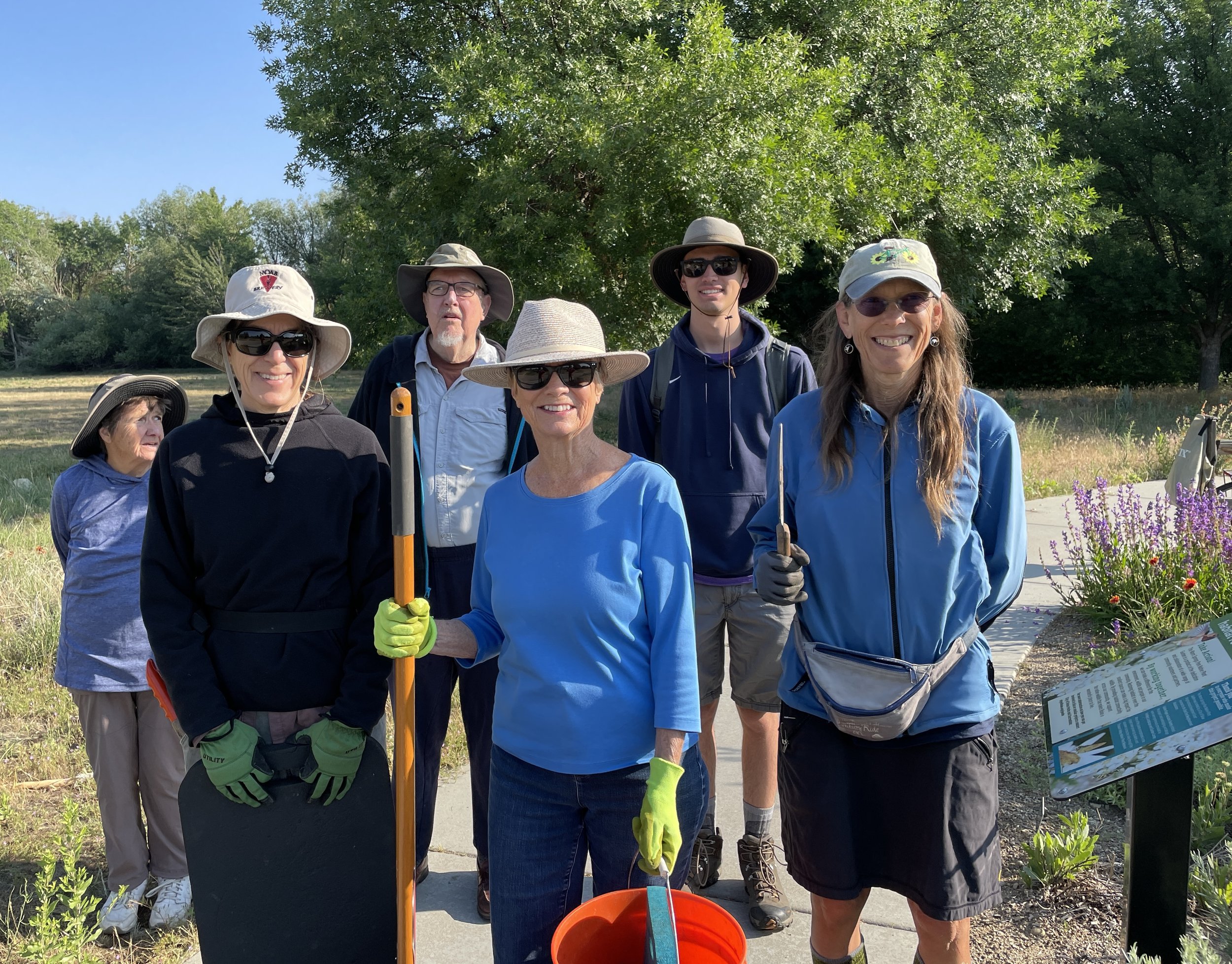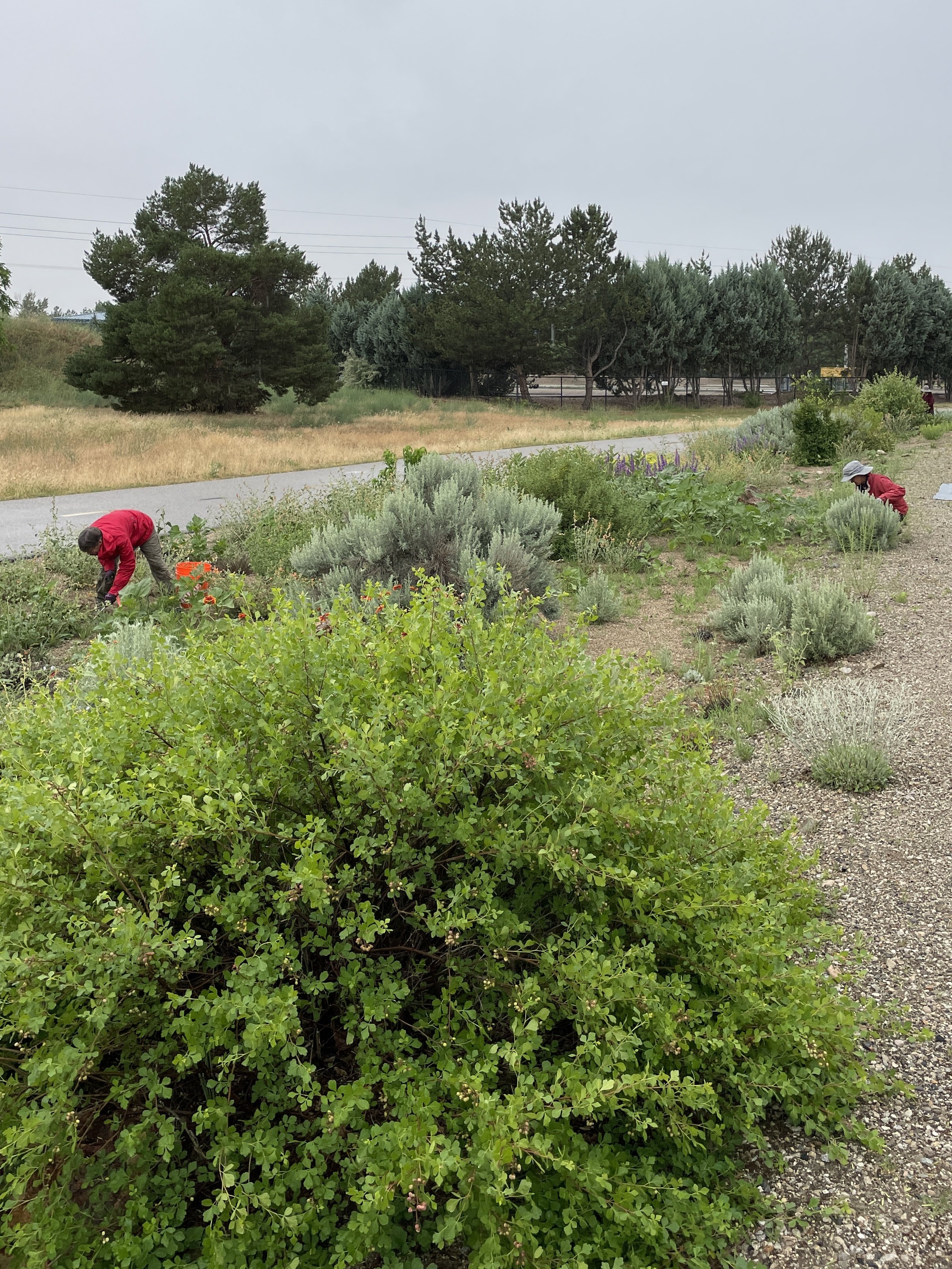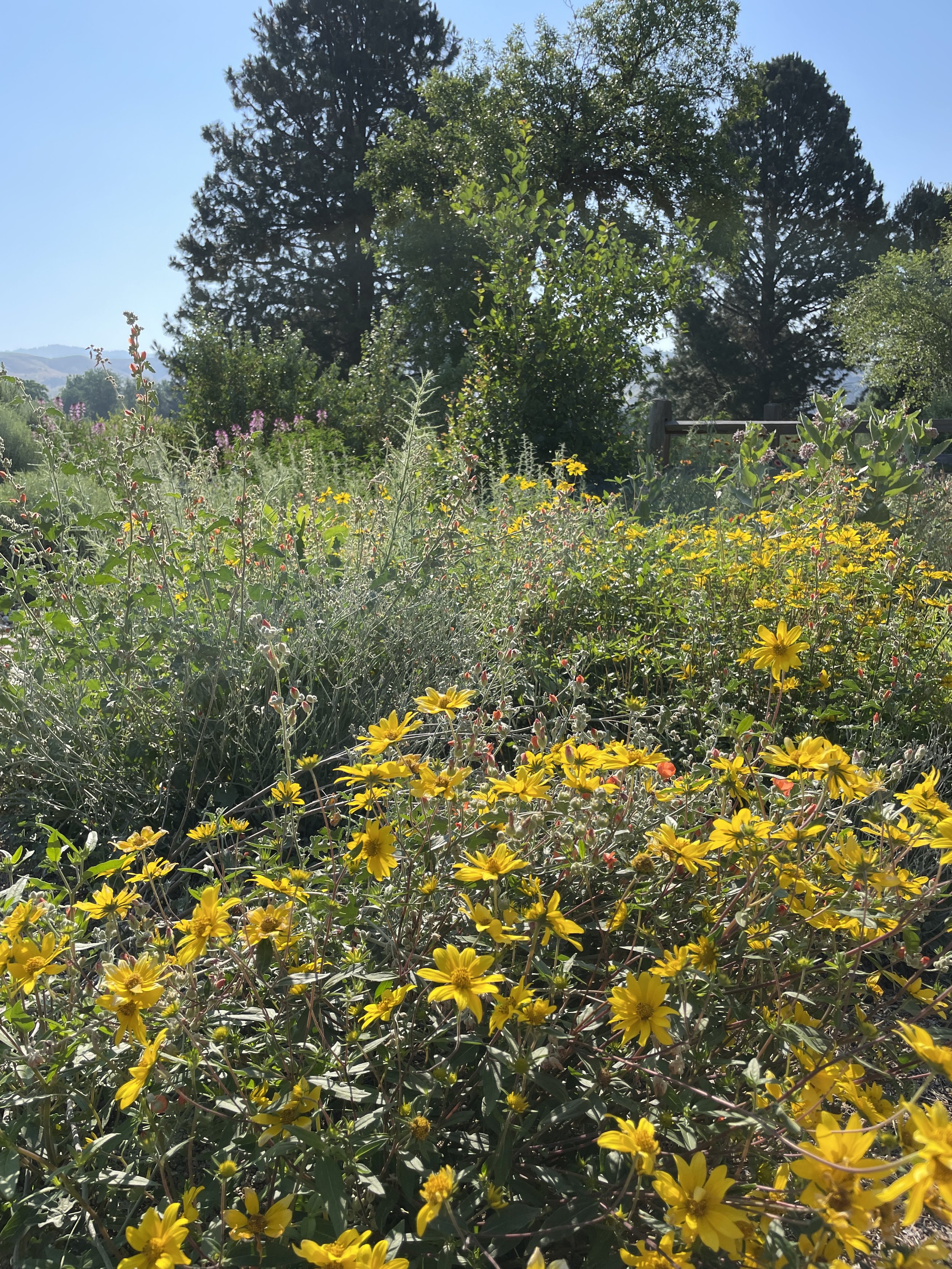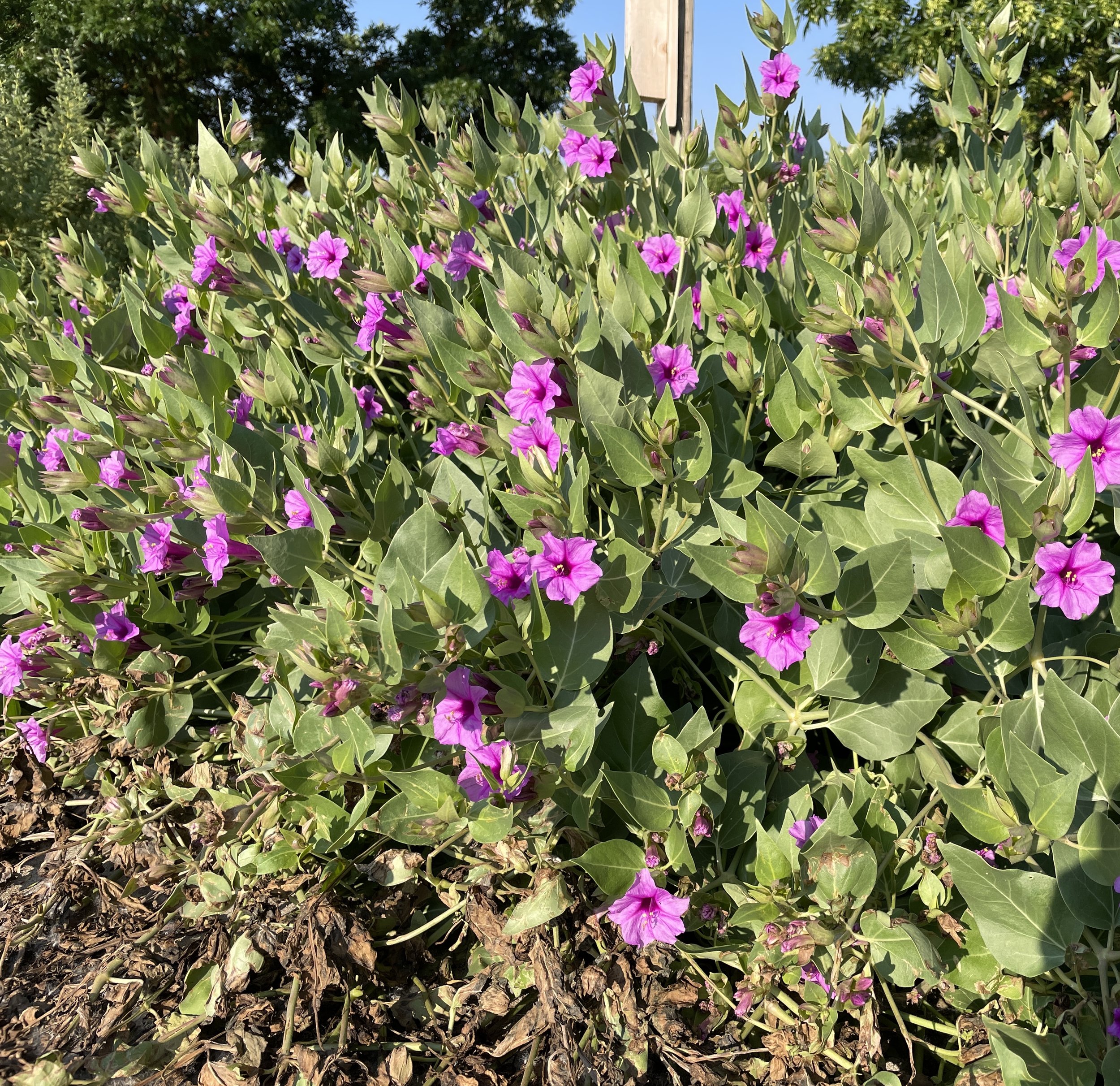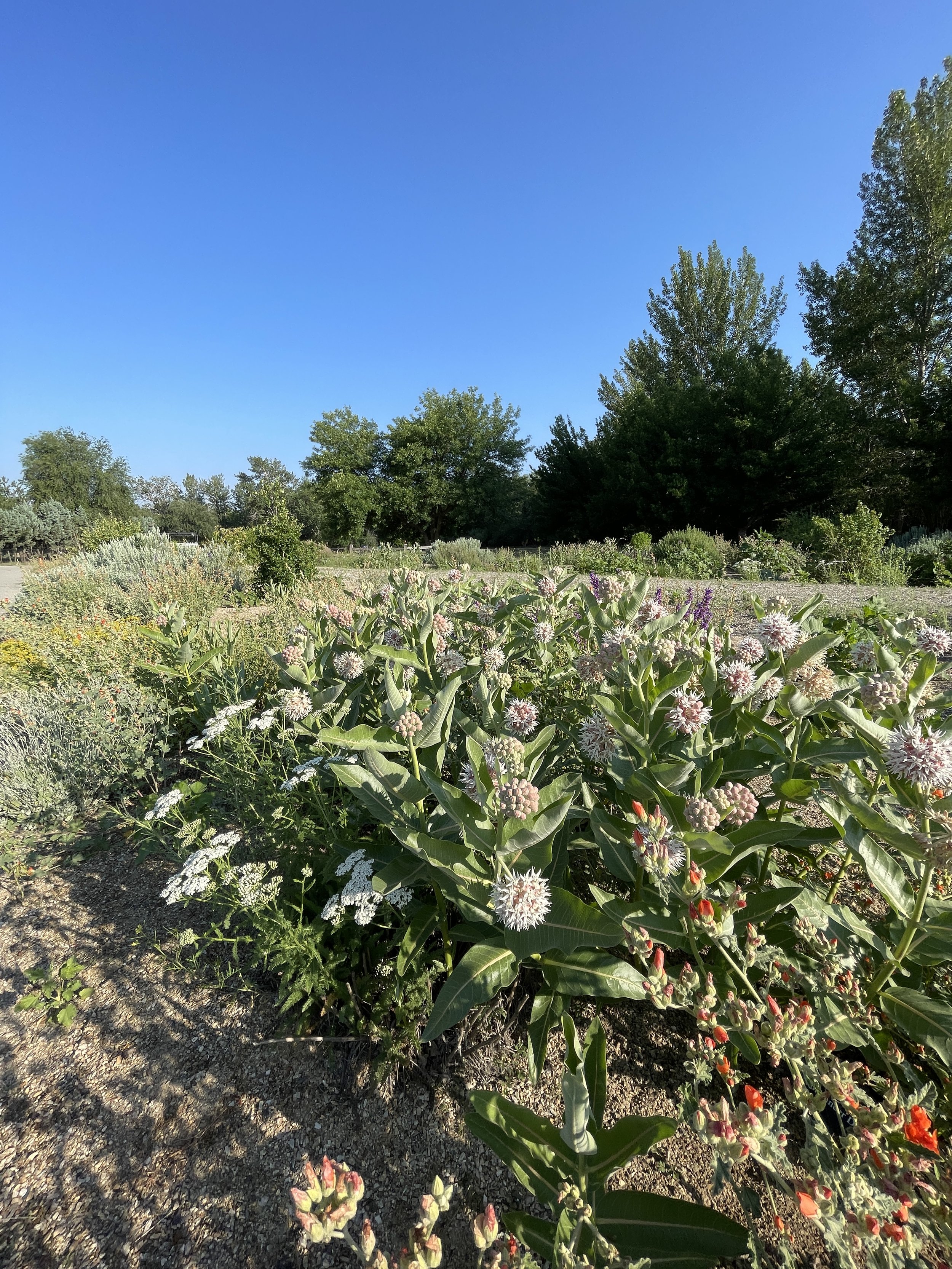A Goathead Patch Transformed: Warm Springs Pollinator Garden Rejuvenates East Boise Habitat
Note: The Pollinator Garden was renamed the Mary Grunewald McGown Pollinator Garden in honor of Golden Eagle Audubon member and volunteer Mary Grunewald McGown on September 29, 2025. Read more about Mary.
By Nicholas Niendorf, GEAS Guest Blogger
When Kristin Gnojewski thinks back on the plot of land where the Warm Springs Pollinator Garden now sits, one word comes to mind: “goatheads.”
“There were goatheads that were just waiting for you to roll them up and put them in a trash bag,” Gnojewski said.
You’d be forgiven if your memory of that section of the Greenbelt is mostly brown hues and weeds. For years, that’s largely all it was.
Weed-Ridden Site Ripe for Improvement
But despite its weedy and dried out appearance, the spot located adjacent to the Boise River Greenbelt just east of Marden Ln. and west of the Warm Springs Golf Course, was ripe for improvement.
Gnojewski is the Community Volunteer Specialist at Boise Parks and Recreation and was instrumental in getting that transformation off the ground.
Before working for Boise Parks, Gnojewski taught at Sage International School and would regularly take her students to Warm Springs Park for various projects.
“I learned that there was a master plan, and that a pollinator garden had been proposed for the area where it exists now, but it hadn't been enacted yet,” Gnojewski said.
Warm Springs Pollinator Garden - 250 S Marden Ln
Community Funding Opens the Door to Habitat Improvement Partnership
Gnojewski, along with Boise River ReWild project lead Sean Finn and Golden Eagle Audubon Society (GEAS) volunteer and botanist Ann DeBolt, assembled a proposal and eventually got funding through a Neighborhood Investment Grant in partnership with the East End Neighborhood Association. The trio immediately recognized the potential the space had.
“It has direct access to Warm Springs Avenue on one side and if you go on the other side it’s essentially Park Center,” said Finn. “You have Adams Elementary School on Warm Springs Avenue and the Sage International School on Park Center. You basically had an opportunity for an outdoor lab or an outdoor education spot. So all those things came together to make that place the perfect spot.”
After acquiring funding for the project, the team partnered with Far West Nursery, who donated significant amounts of equipment, materials, and labor for the garden’s landscaping, including building the dry riverbed and doing lots of weeding. Plants came both from community donations and Golden Eagle Audubon’s Treasure Valley Native Plant Network.
Volunteers Tend the Garden
“The thing that I really love about the garden is that it has been a community volunteer effort from the very start,” Gnojewski said.
That volunteerism didn’t stop at the garden’s inception, however.
The Pollinator Posse, as they’re known, meets every Tuesday to help maintain various pollinator gardens throughout the area, including Warm Springs Park. Groups from various companies in the Treasure Valley also donate time in the garden, not to mention different student groups and schools. Since the park was adopted by GEAS, Golden Eagle Audubon members gather throughout the year to pitch in on larger-scale maintenance.
The Garden is About More Than Pollinators
So why go through all this for a garden?
“It's a space that is designed to not only be aesthetically beautiful to humans, but to provide a rich, safe habitat for—we say pollinators, but it's really even beyond that—invertebrates, who then enhance habitat for birds and the food web,” said Gnojewski.
Kristin Gnojewski in the garden
Gnojewski emphasized the impact of invertebrates beyond just the bumblebees we typically associate with pollinator gardens.
“I think that we just underestimate the importance of small insects and invertebrates in general, not only for our own food sources and wellbeing, but also for so many things like creating soil and breaking down waste, as well as their role in creating habitat,” said Gnojewski.
Creating and maintaining a space where those invertebrates can thrive, and thus help support all the other wildlife that occupies the garden, is something Gnojewski and others constantly grapple with.
“When we choose the plants we're really thinking about how we could support a wide diversity of invertebrate life. We use plants that bloom throughout the entire season and have a lot of different colors and structures so that we’re supporting the greatest diversity of wildlife,” said Gnojewski.
The Garden Is Giving Back In Many Ways
From goldfinches to hummingbirds, quail to Cedar Waxwings, various toads, and countless insects, the garden’s diverse structure is paying dividends. And that payoff goes beyond the animals and insects that hang out in the park: the once tiny plantings are now so productive that they often get transplanted to other gardens. Their seeds are also collected to be used in other places.
“I'm very pleased that it is now so successful that we're kind of beating back a bunch of the native plants to keep the garden from being overgrown and to continue to have that garden appearance, as opposed to a wildflower meadow, which it would quickly become,” said Finn.
The Garden is Enjoyed by People While It Supports a Healthy Ecosystem
In Finn’s mind, that success is rivaled only by the experience of seeing people walking by the garden.
“The looks on their faces are worth almost as much as the pollinator garden itself,” said Finn.
Gnojewski encourages anybody who hasn’t been to the Warm Springs Pollinator Garden to visit and just sit, listen, and look around.
“Take in the feeling of what it's like to be surrounded by so much diversity and once you take the time to start to look around you'll kind of get hooked because it's really incredible to see just how many small critters you can support in a very small space.”
Photos by Liz Paul and Annette Hanson


